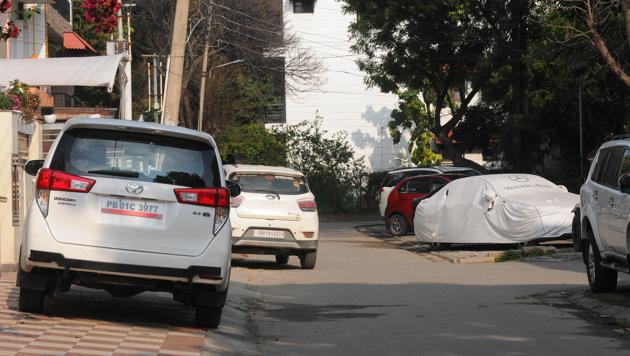Chandigarh administration exploring taller house options for stilt parking
UT adviser Manoj Parida has asked the urban planing department to consider relaxing height restrictions in residential units
In a city struggling with acute parking problems, the UT administration is exploring plans to allow taller residential buildings to create space for stilt parking – which is not permitted as of now.

People in neighbouring states like Haryana too can build stilt parking – a partially covered space on the ground floor, usually in apartment blocks – with an additional floor to resolve the parking problem.
UT adviser Manoj Parida has asked the urban planing department to consider relaxing height restrictions in residential units. “I have directed the UT chief architect to re-examine the issue of allowing increased height in houses,” he said on Friday.
The development comes in the wake of the deadlock over the administration’s draft parking policy which recommends building stilts as a solution to resolve the parking mess. It also proposes relaxation in norms to allow for more space for vehicles in residential and commercial units.
Why does height matter?
The draft policy allows stilt parking but within the height permitted. It states, “Stilt parking at ground floor shall be allowed within the permissible ground coverage, FAR (floor area ratio) and height of the building.”
FAR means the ratio of a building’s gross floor area to the total area of the land upon which it is constructed
However, the thinking in some circles within the administration is that given the current height restrictions, allowing stilt parking will not make sense, and people will not opt for it. “Will people sacrifice their residential space for more parking space? This is not reasonable,” said a senior UT official on condition of anonymity.
Notably, the planning department had earlier expressed reservations over allowing stilt parking or relaxations in height, with some officials saying there’s no such provision in the master plan and that it could go against the architectural vision of the city.
The unresolved height issue has led to hurdles in implementation of the parking policy.
Parking mess
Parking remains a major problem in Chandigarh as it has the highest per capita car ownership in the country: Four per household according to the draft policy.
For a population of around 11.35 lakh, there are more than 12 lakh motor vehicles registered in the city, states the 2019 report of the Chandigarh traffic police on Road safety in Chandigarh. Between 2010 and 2019, around four lakh new vehicles were added in the city.
“The parking problem is severe in the city. People park their cars in front of their houses,” said Vinod Vashisht, convener of the City Forum of Residents’ Welfare Organisations. “Till we impose restrictions on car ownership, stilt parking is one of the solutions we have to explore.”
The situation is worse in the Central and southern sectors “With cars parked on the streets, no space is left even for movement of emergency vehicles. This problem requires urgent resolution,” said Hitesh Puri, chairman, Chandigarh Resident Association Welfare Federation.
Sumit Kaur, former chief architect, UT administration, however, disagreed, adding: “We have already allowed increased in height in marla houses. The installation of solar panels, etc also added to the height. Any further increase will impact the streets.”
Stating that instead of stilt parking and height relaxations, a change in city’s mobility culture is required, Kaur added, “Adoptions of a cycle culture is one of the options. Other solutions are also mentioned in the city’s master plan.”






